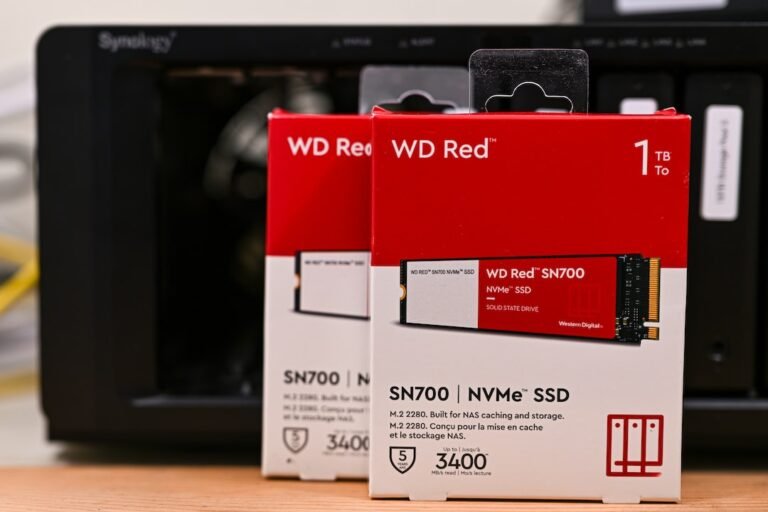Introduction
Have you ever been in the middle of an important video call or online gaming session, only to have your home network suddenly drop out? It’s frustrating, to say the least. That’s where home network redundancy and failover come into play. In this article, we’ll explore how you can ensure uninterrupted connectivity in your home network, even in the face of failures or disruptions. By implementing redundant network setups and failover solutions, you can enjoy a seamless online experience without any interruptions. So, let’s dive in and discover the world of home network redundancy and failover.
What is Home Network Redundancy?
Home network redundancy refers to the practice of creating backup systems or pathways within your home network infrastructure. In simple terms, it’s like having a spare tire for your car � just in case one fails, you have another to rely on. Similarly, with home network redundancy, you create additional pathways for your data to flow, ensuring that if one fails, the other takes over seamlessly.
Why is Home Network Redundancy Important?
Imagine if your main internet connection suddenly goes down in the middle of a crucial work assignment or an online gaming session. Without any backup systems in place, you would be left frustrated and disconnected. However, with home network redundancy, you can avoid such disruptions and ensure uninterrupted connectivity.
How Does Home Network Redundancy Work?
Home network redundancy typically involves setting up and interconnecting multiple network devices and paths to provide backup options when one fails. Here are a few commonly used methods for achieving home network redundancy:
Multiple Internet Service Providers (ISPs): One effective way to ensure network redundancy is by having two or more internet service providers. If one provider goes down, you can switch seamlessly to another. This can be achieved by integrating both ISPs into a load-balancing router that distributes the network traffic across multiple connections.
Network Attached Storage (NAS): Implementing a Network Attached Storage device can also contribute to network redundancy. By centralizing your data storage and backups on a NAS, you ensure that your critical data is always accessible, even if one of your devices fails.
Redundant Network Cabling: Utilizing redundant network cabling is another effective method for achieving home network redundancy. By establishing multiple network pathways between your devices, you guarantee that if one cable gets damaged or fails, your network traffic can still flow through the alternative pathways.
Importance of Failover Solutions in Home Networks
While home network redundancy establishes backup systems, failover solutions take it a step further by automatically diverting traffic when a failure occurs. Failover solutions ensure that if one network device or pathway fails, the traffic is instantly redirected to the backup device or pathway, allowing uninterrupted connectivity without any manual intervention.
Types of Failover Solutions
Router Failover: Router failover solutions involve connecting two internet routers in a redundant setup. When the primary router fails, the secondary one takes over automatically, ensuring uninterrupted internet connectivity.
Power Failover: Power outages are an inevitable reality in many areas. To ensure uninterrupted network connectivity even during power failures, you can use power backup solutions such as uninterruptible power supply (UPS). A UPS provides temporary power to your networking devices, allowing them to stay connected until the main power is restored.
Internet Connection Failover: With an internet connection failover solution, you can automatically switch to a backup internet connection when the primary one fails. This can be achieved by setting up a load-balancing router that constantly monitors the availability of internet connections and switches to the backup connection seamlessly when needed.
- Redundant Network Devices: Redundant network devices, such as switches and access points, can also contribute to failover solutions. By having duplicate devices that are pre-configured and ready to take over when needed, you can ensure that your network keeps running smoothly even if one device fails.
Conclusion
Home network redundancy and failover solutions are crucial for uninterrupted connectivity. By implementing redundant network setups and failover solutions like multiple ISPs, redundant cabling, NAS devices, and failover routers, you can ensure that your network remains operational even in the face of failures. Don’t let network disruptions ruin your online experience � take control and ensure a seamless and uninterrupted connection in your home network.
FAQ
| Question | Answer |
|---|---|
| What is the best way to set up a home network for redundancy? | The best way to set up a home network for redundancy is by implementing multiple internet service providers (ISPs) and utilizing a load-balancing router that distributes the network traffic across them. This ensures that if one ISP fails, your network traffic seamlessly switches to the backup ISP, keeping your connectivity uninterrupted. Additionally, setting up redundant network cabling and using a NAS device for centralized storage can add another layer of redundancy to your home network. |
| How can I ensure uninterrupted connectivity during power outages? | To ensure uninterrupted connectivity during power outages, you can use a power failover solution such as an uninterruptible power supply (UPS). A UPS provides backup power to your networking devices, allowing them to remain operational until the main power is restored. By using a UPS, you can mitigate the impact of power outages on your network and ensure uninterrupted connectivity. |
| What are the benefits of failover solutions in home networks? | Failover solutions in home networks offer several benefits. They ensure uninterrupted connectivity by automatically diverting traffic to backup devices or pathways when failures occur. This minimizes downtime and provides a seamless online experience. Failover solutions also make your network more resilient by creating redundant pathways and devices, reducing the risk of single points of failure. Additionally, failover solutions offer peace of mind, knowing that your network can handle disruptions without impacting your daily activities. |
| Can I set up home network redundancy with a single ISP? | Yes, you can set up home network redundancy with a single ISP by implementing a redundant network cabling setup. By establishing multiple network pathways between your devices, you create a backup option if one cable fails. This redundancy ensures uninterrupted connectivity even with a single ISP. However, for added reliability, using multiple ISPs is highly recommended as it provides redundancy at the internet provider level as well. |
| What should I consider before implementing home network redundancy? | Before implementing home network redundancy, consider your specific needs and requirements. Evaluate the importance of uninterrupted connectivity in your daily life and ascertain the potential impact of network failures. Take into account factors like the cost of multiple ISPs, the complexity of the setup, and the level of technical expertise required for maintenance. Planning and understanding your needs will help you determine the best redundancy and failover solutions for your home network. |
Further Reading
| Website | Description |
|---|---|
| PCMag – How to Set Up an All-In-One Home Network | This comprehensive guide from PCMag provides step-by-step instructions on setting up an all-in-one home network, including redundancy and failover. |
| Lifewire – Redundant Network Cabling | Lifewire offers an in-depth article explaining the concept of redundant network cabling and how to set it up for improved network redundancy. |




